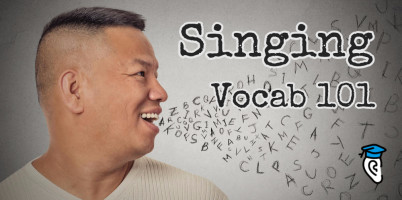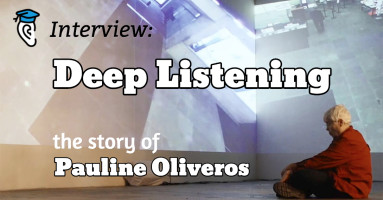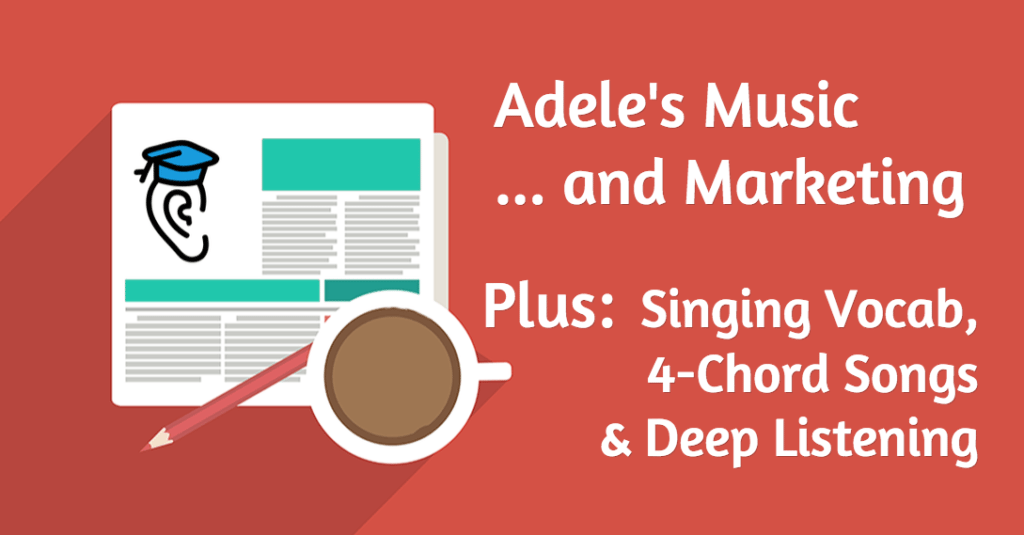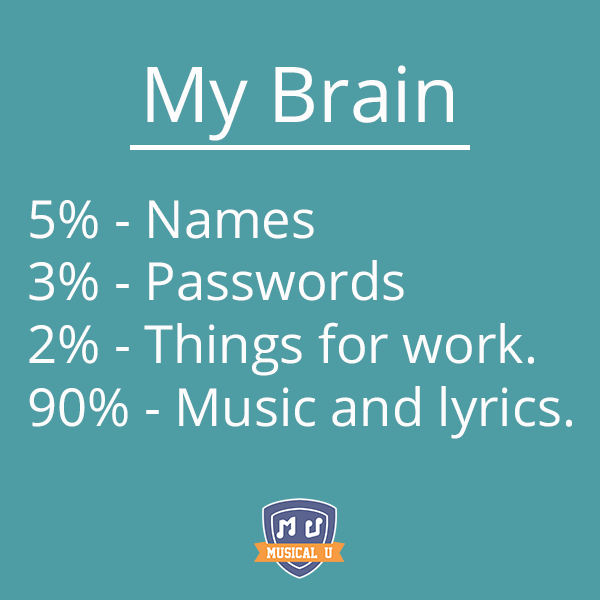Are you sick and tired of hearing “Hello… It’s me…” – or maybe you can’t get enough of Adele? Did you try your hand at 3-chord songs last week and now you’re hungry for more? Or perhaps you’re a singer needing explanations of the technical terms or trying to figure out the best solo songs to sing… Read on to get solutions to all these dilemmas – and more!
Adele’s “Hello”: Great Music or just Great Marketing?
We promised last week that we’d be digging into the controversy around Adele’s new single, attempting to answer the question: is the song actually good enough to warrant its phenomenal success, or is it just a product of pop industry hype and marketing?
So we found 5 experts in music analysis to listen to “Hello” and tell us what they thought…
Here are a few excerpts to whet your appetite:
“Big, emotional top notes have been used by composers for centuries to make a deep impact on listeners. Operatic arias often build towards a particularly high, long note, marking an emotional and musical climax. The same is true here.”
“While the song itself could have been written in 1972, the production has a few touches that locate it unambiguously in the present. In the seventies, Adele’s voice would have been soaked in natural reverb; now she gets a blend of digital reverb and delay that keeps her sounding crisp and immediate.”
“I think it’s remarkable that one of the most successful songs of the last decade is a four chord song. Not only that but it’s the classic combination of I, IV, V, and vi chords throughout, the same four chords that have powered thousands of pop and rock hits. To put it another way: what’s remarkable about the harmony is that its as unremarkable as could be.”
“All these features (repetition of the chord sequence, easy chunking of the melody, re-use of melodic motives, emotional vocal performance) contribute to this tune catching on as an ear worm with many people.”
We’re also taking a public vote – what do you think? Music or Marketing? Click and cast your vote! Is Adele’s “Hello” good enough to share as a Music Story on Facebook? Or would that just add to the marketing hype…? Vote here.
And while we’re on the subject of marketing… Halloween is over but we couldn’t let it pass without making sure you’d read this amazing behind-the-scenes scoop on the making of the equally-amazing Ghostbusters music video.
One more chord… thousands more songs!
 Did you enjoy our recent roundup of the best 3-chord song tutorial videos? Then don’t miss out our new article this week introducing the vi chord for 4-chord songs with the 7 best videos to learn 4-chord songs!
Did you enjoy our recent roundup of the best 3-chord song tutorial videos? Then don’t miss out our new article this week introducing the vi chord for 4-chord songs with the 7 best videos to learn 4-chord songs!
Speak like a Singer – and Belt one out.
 Singers sometimes use wacky words, have you noticed? “Glottal”, “portamento”, “thyroid tilt”, “belting”…
Singers sometimes use wacky words, have you noticed? “Glottal”, “portamento”, “thyroid tilt”, “belting”…
If you don’t know the meaning of the words it can be hard to follow the advice you find for improving your singing.
Clear up any confusion in this essential glossary: Singing Vocab 101.
 Speaking of “belting”… if you’re a female singer (or feeling ambitious) you’ve got to check out this ranking on the Musical U blog of the Best Songs for Female Vocal Solos!
Speaking of “belting”… if you’re a female singer (or feeling ambitious) you’ve got to check out this ranking on the Musical U blog of the Best Songs for Female Vocal Solos!
And for all you a cappella fans out there, be sure to read the latest instalment of 200 Reasons to Love A Cappella. What does good lighting have to do with a cappella? Head on over to the A Cappella Blog and find out.
Discover Pauline Oliveros and Deep Listening
 Pauline Oliveros is a modern composer who created the concept of “Deep Listening”: a continual mindful attentiveness to sound. It’s a powerful practice for song-writers and composers, but also a great way to approach active listening for any musician.
Pauline Oliveros is a modern composer who created the concept of “Deep Listening”: a continual mindful attentiveness to sound. It’s a powerful practice for song-writers and composers, but also a great way to approach active listening for any musician.
Now Daniel Weintraub, a New York filmmaker, is filming a full-length documentary about the life and works of Pauline Oliveros, to tell her story and explain the great significance of her contributions to the world of music. This week Daniel came to EasyEarTraining.com to tell us more about this project. Learn more about Deep Listening – The Story of Pauline Oliveros.
What fills the brain of a musician?
We’ll leave you this week with a final thought from Musical U: what fills your brain? If you’re anything like us it might look a bit like this:
Whether you’re an Adele fan, a chords-by-ear guitar or piano player, a singer, or someone who appreciates listening deeply to great music, we hope you’ve found something new to advance your musicality in this post. If so, please click the buttons below to share it with a friend on Twitter or Facebook!








